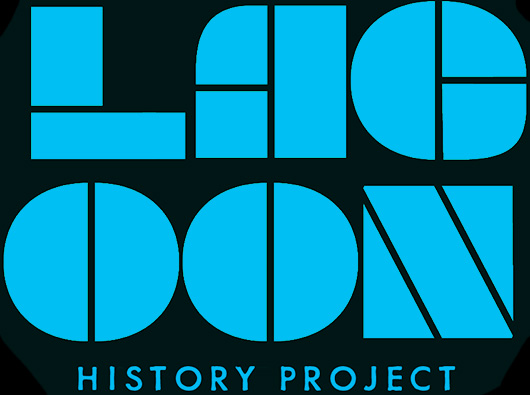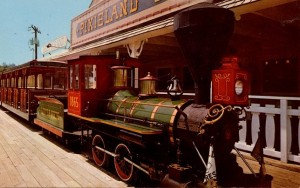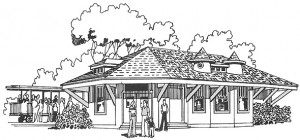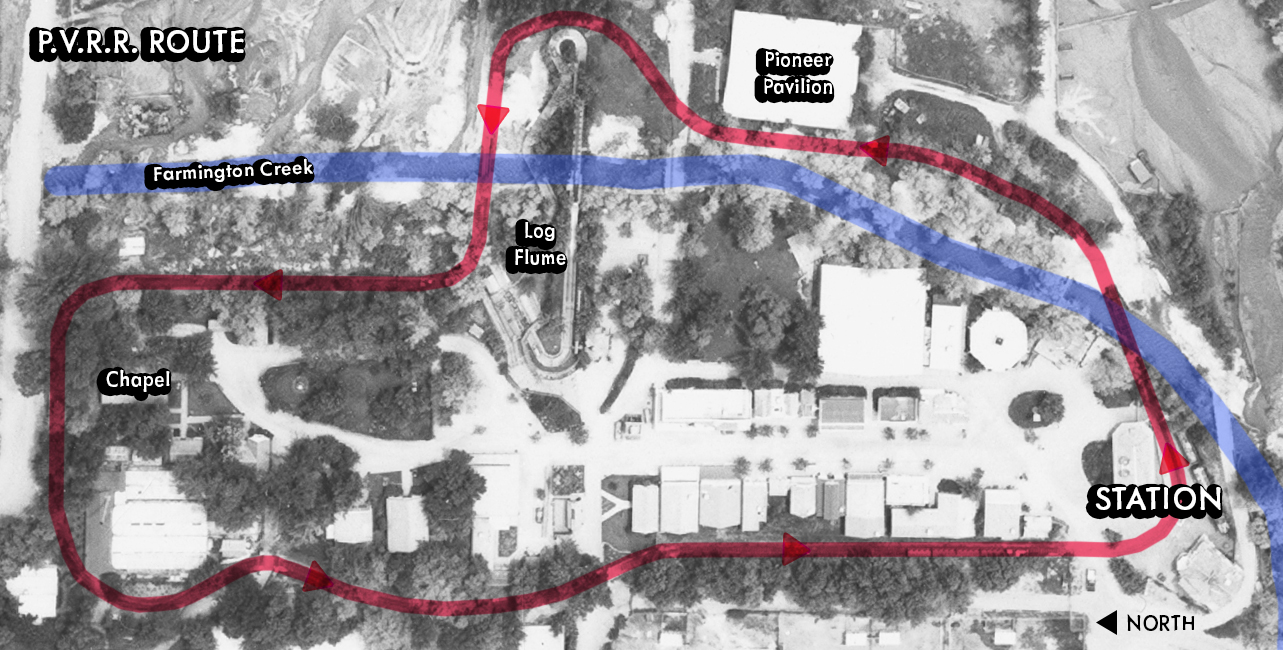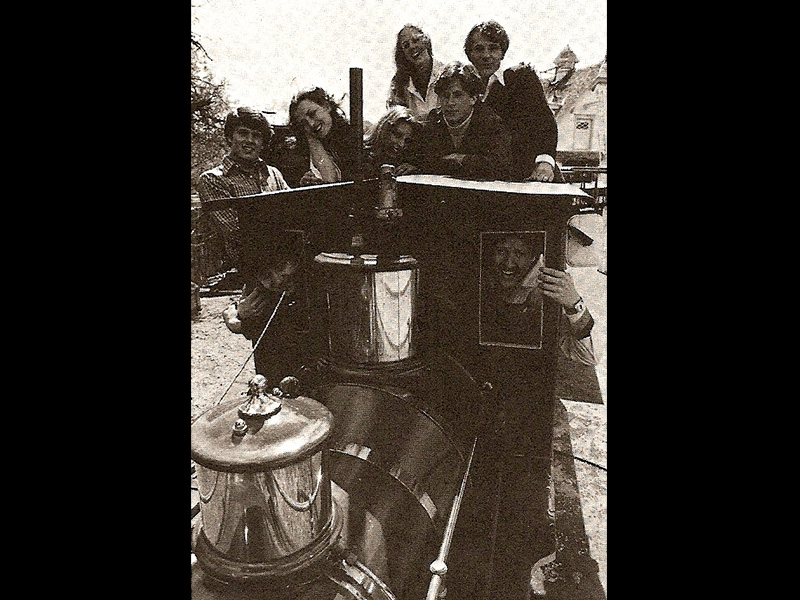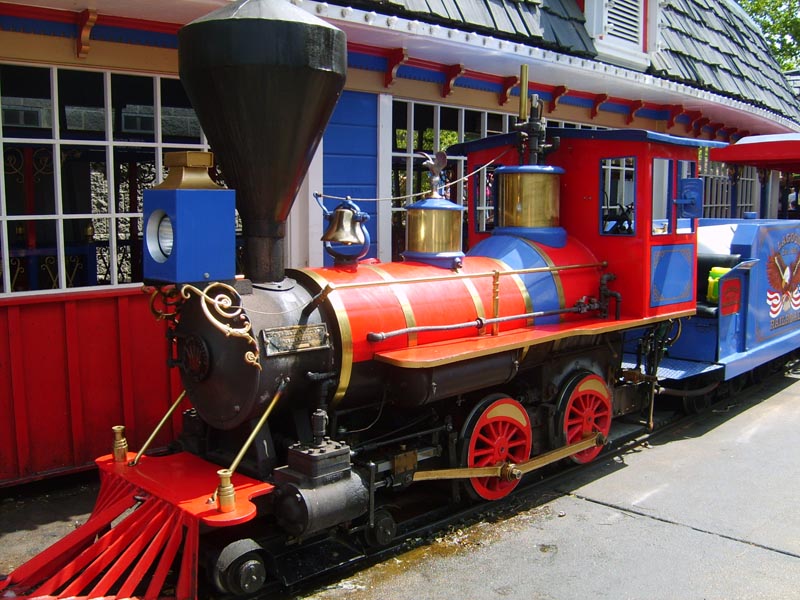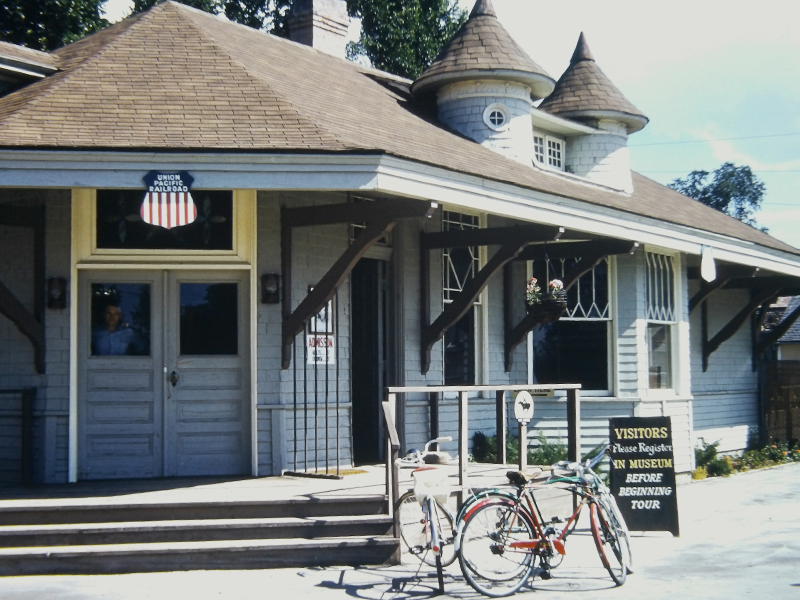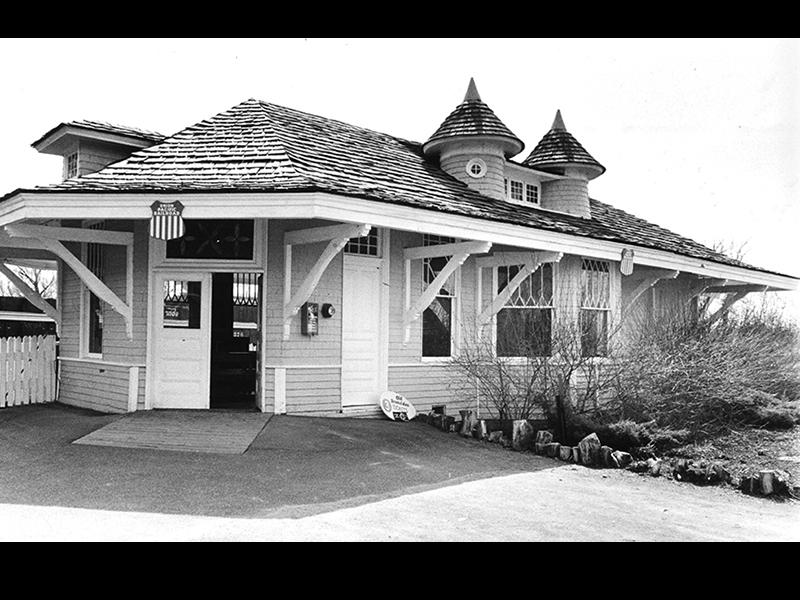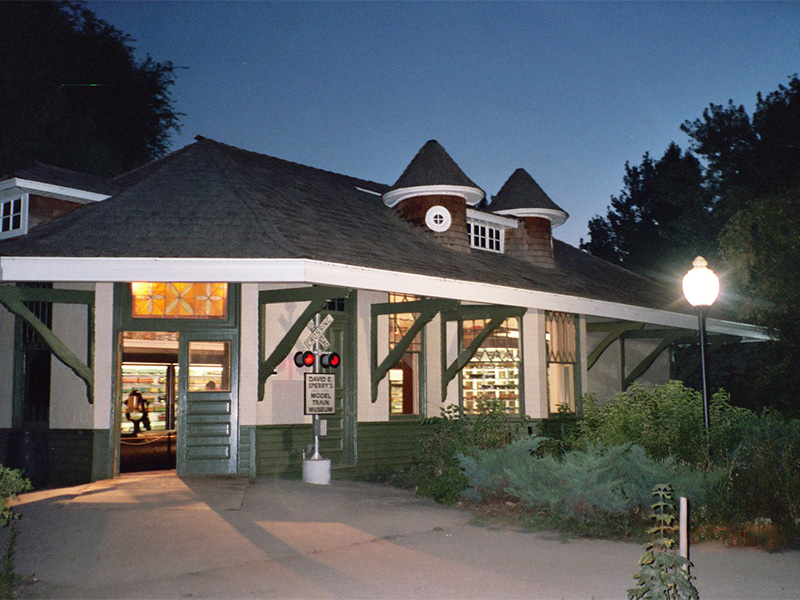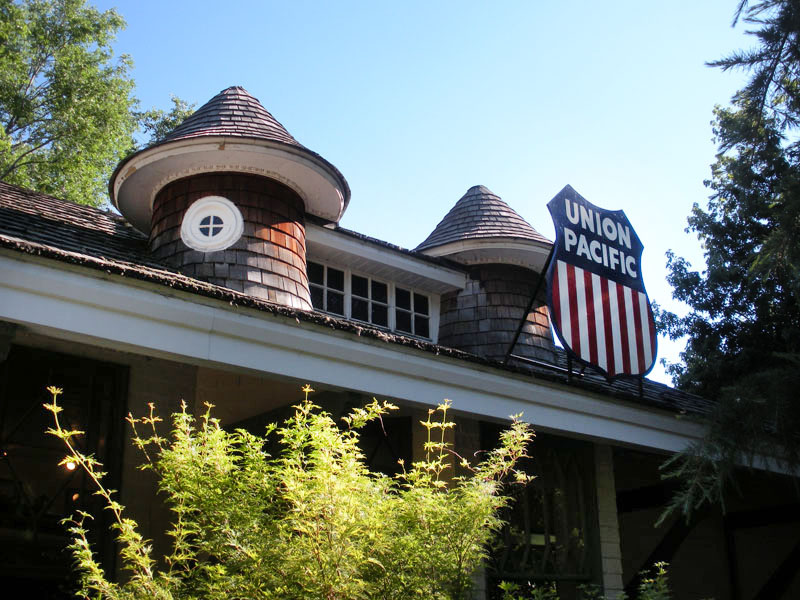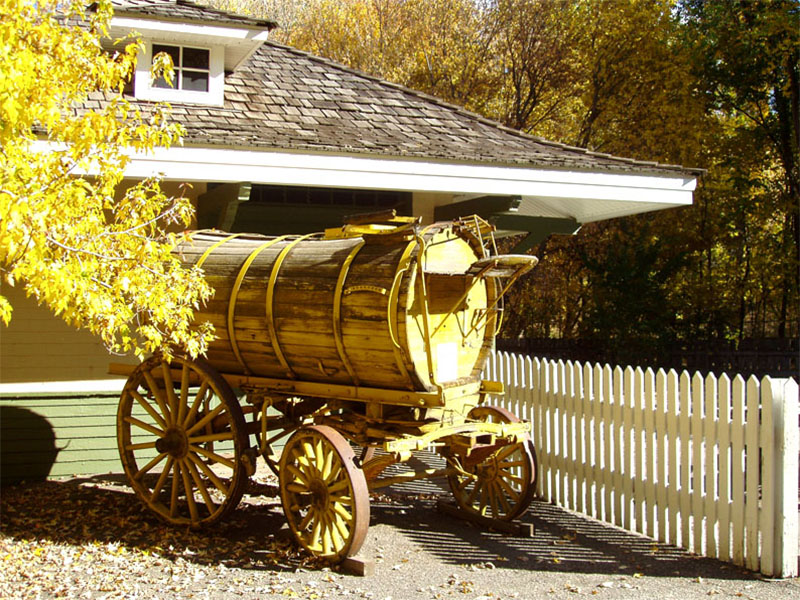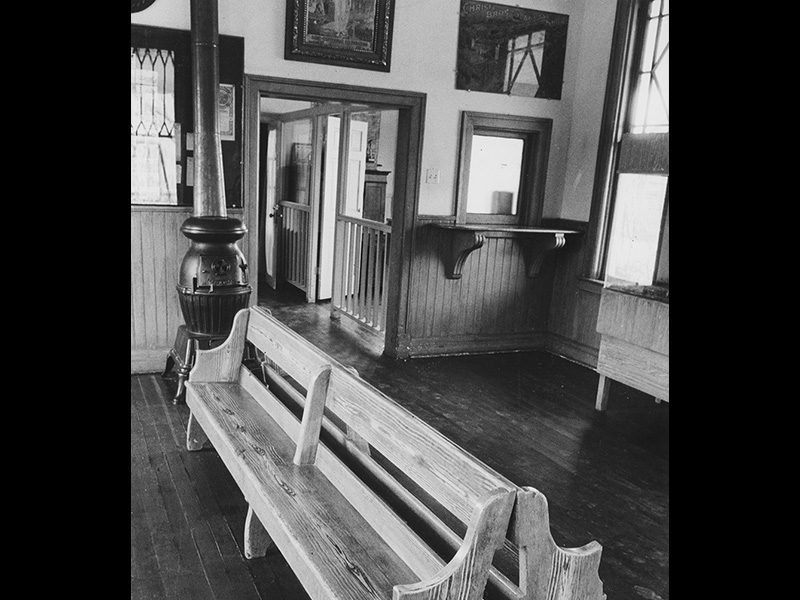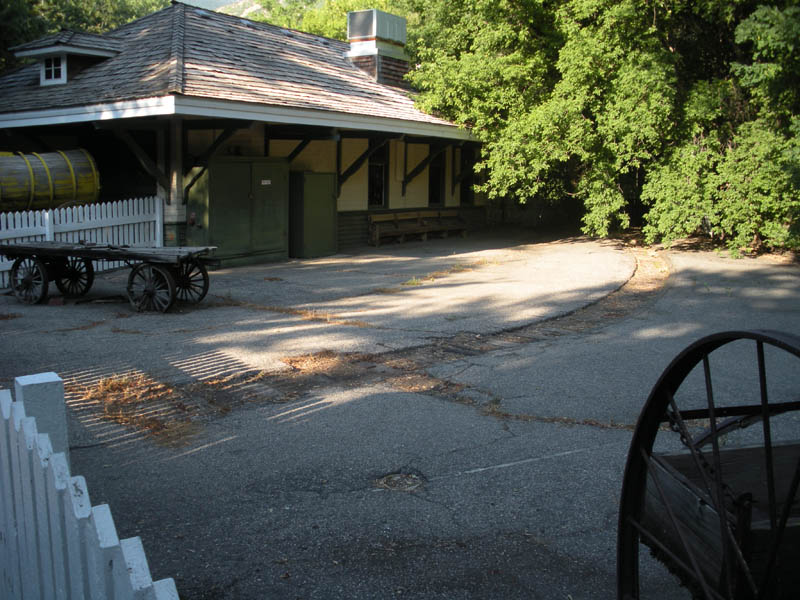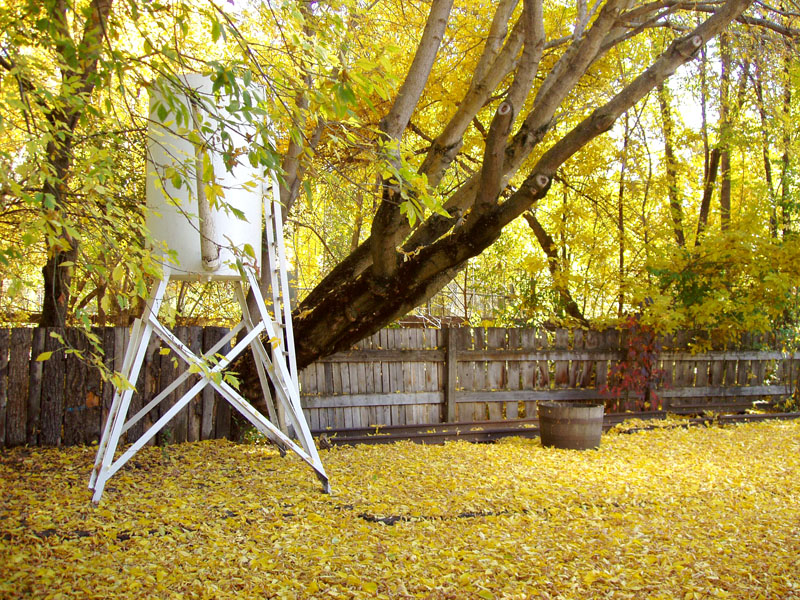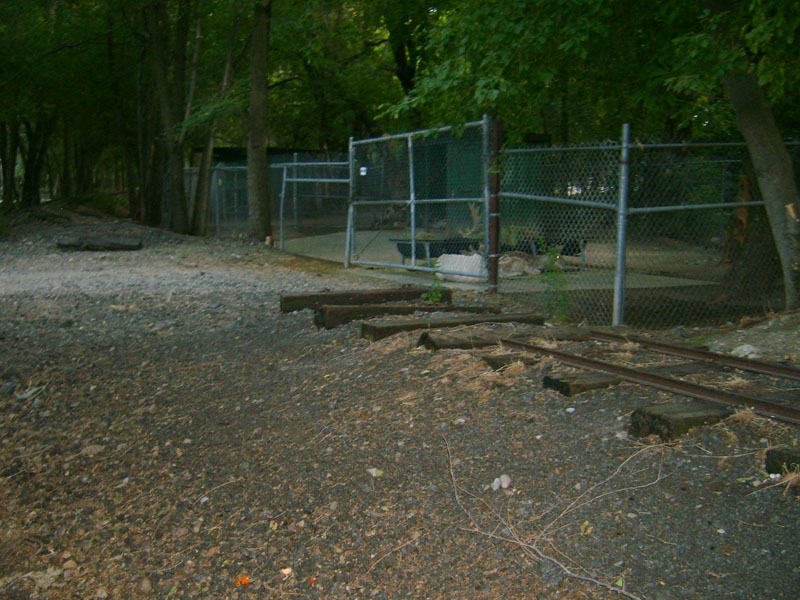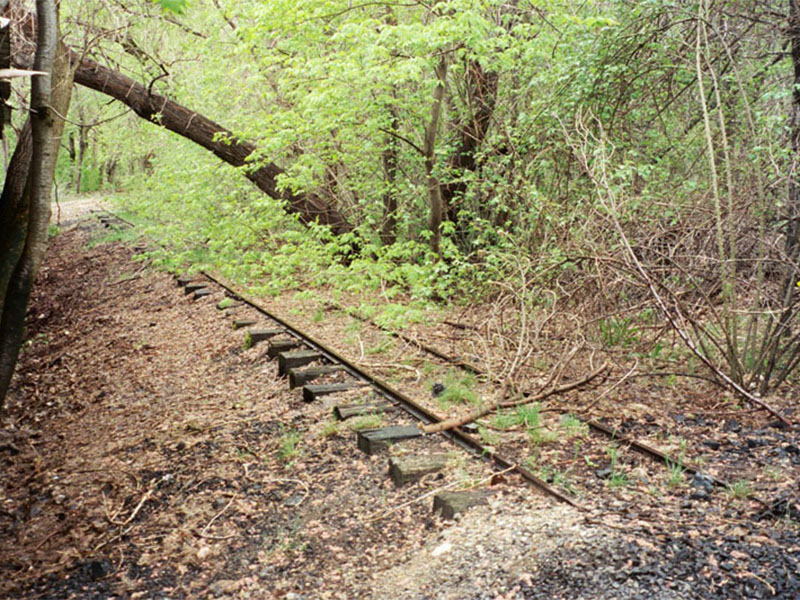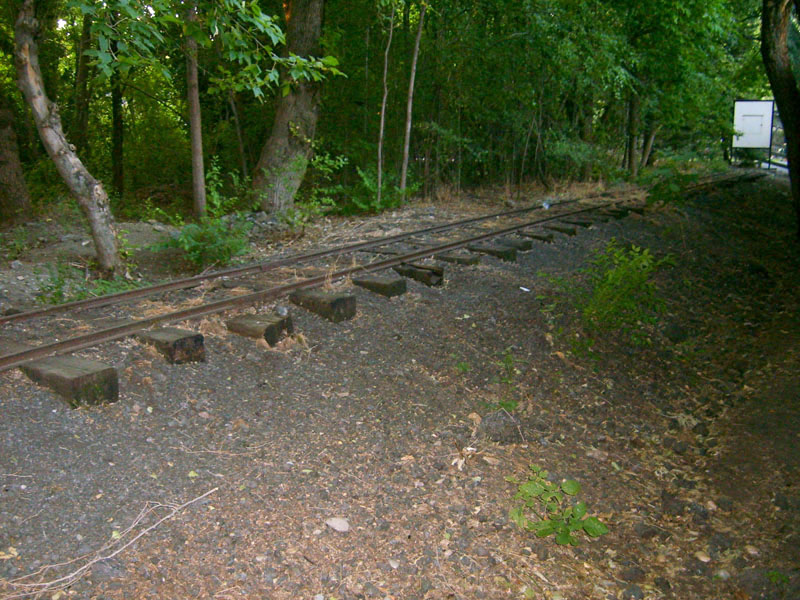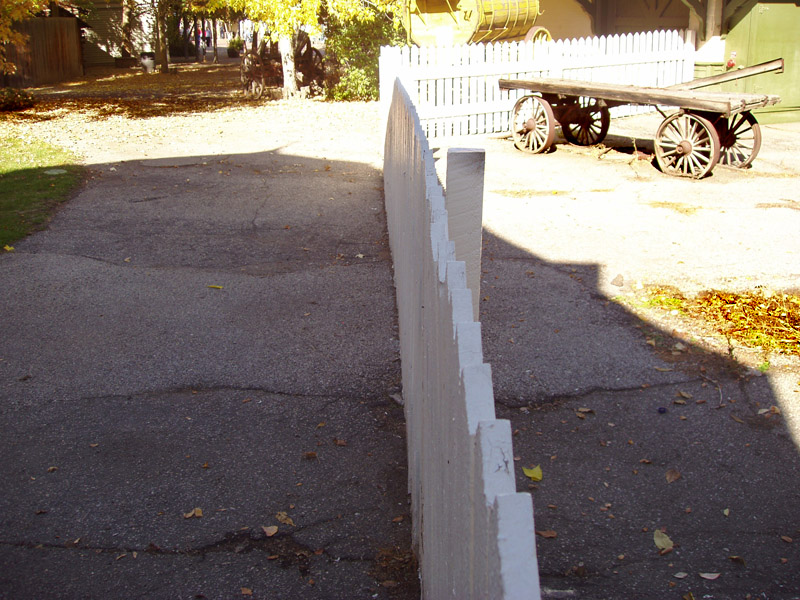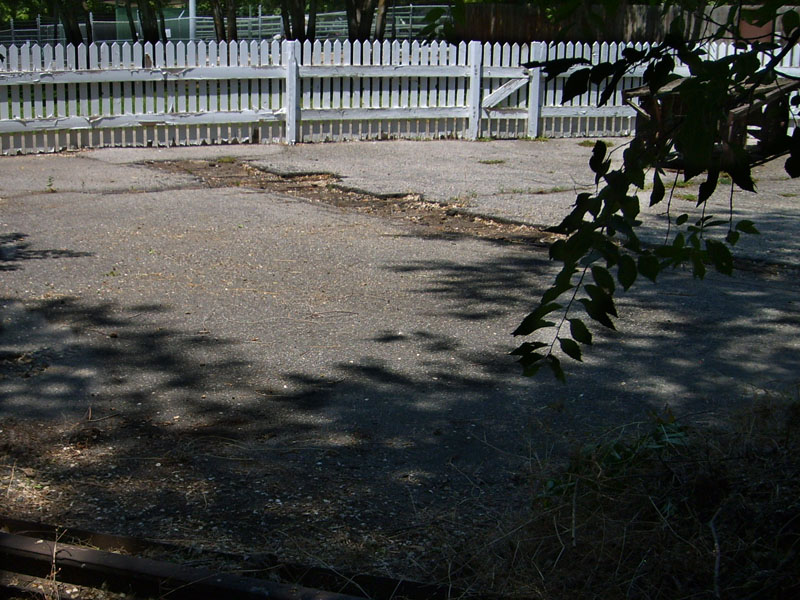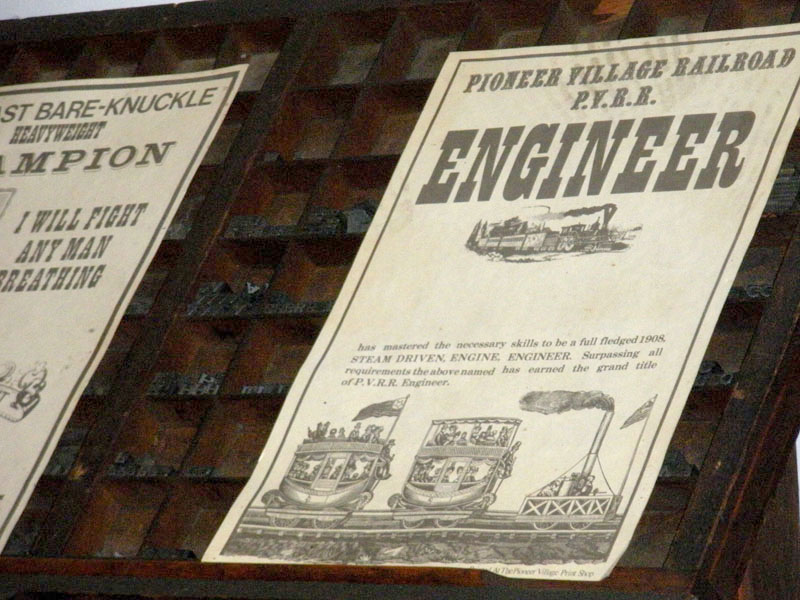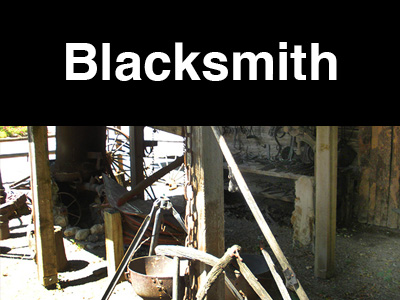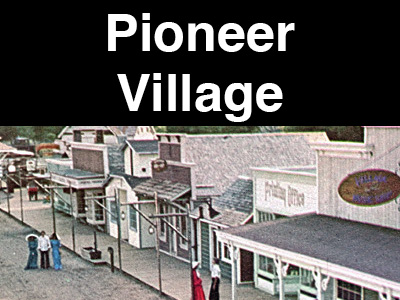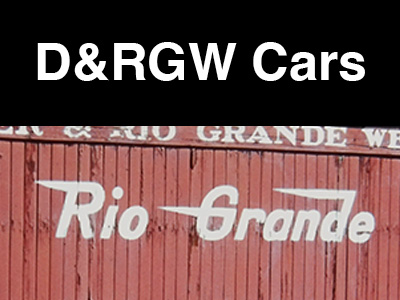a.k.a. Old Ironsides
Opened: 1976
Closed: 1988
Location: Pioneer Village
Manufactured By: Crown Metal Products – Wyano, Pennsylvania
Track Length: ~2,400 ft
Track Gauge: 24 in
Number Of Trains: 1

Most of Lagoon’s Pioneer Village originated as an attraction in Salt Lake City. When the collection was brought to Lagoon, new features were added including a Crown Metal Products train which circled the entire village. This train first operated at Pixieland near the Oregon Coast beginning in July 1968. When Pixieland failed to make a profit, the owner sold the park’s train and log flume to Lagoon for a total of $100,000 in order to get out of debt. At Lagoon in 1975, the train became the Wild Kingdom Train and the Log Flume opened in its present-day location (a whole season before Pioneer Village was completed). When the new Pioneer Village opened in 1976, the train was put into operation on the new Pioneer Village Railroad and another train was purchased for Wild Kingdom.
THE TRAIN
The Pioneer Village Railroad had another name, at least in later years. The ride is listed as Old Ironsides in the 1988 park guide and even after the ride closed the name showed up on the 1989 map and in the 1990 edition of the AAA Guide to North America’s Theme Parks. The nickname “Old Ironsides” has had a few different applications throughout history, but the name in this case would have been in reference to an early steam locomotive designed by Matthias W. Baldwin. It’s uncertain when the name Old Ironsides was first used for the ride. The locomotive acquired a name of its own. The name Meriwether is mainly used among employees and was apparently inspired by Meriwether Lewis of the Lewis & Clark Expedition, who also had a significant connection to the Oregon Coast.
While Wild Kingdom Train has had three different trains at different times, only Meriwether has traveled the Pioneer Village Railroad. Meriwether is a miniature American 4-4-0 locomotive built in 1968. Powered by live steam and originally fueled by coal, it was converted to burn propane after Lagoon bought the train in 1974. The tender received a larger water tank at that time and again in 1980 and 2004. At Pixieland, the the train included three coaches. Lagoon added a fourth coach, though it’s uncertain when. Meriwether, along with her tender and coaches, have been repainted three times. The original red, green and yellow scheme is shown in the photo to the left. At some point, it was repainted dark red and white. The second repainting was in 1987 with a light blue, pink and white color scheme. It’s currently painted red, blue and gold.
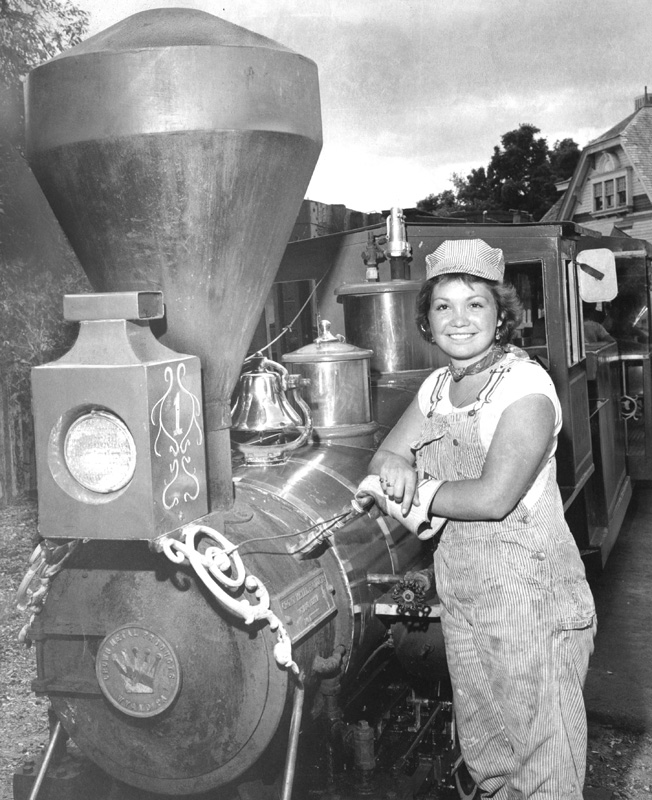
THE STATION
Passengers loaded and unloaded at the station on the south end of Pioneer Village’s Main Street. The building was formerly a train depot built at the end of the old Maple Street in Kaysville, Utah by the Oregon Short Line, a subsidiary of Union Pacific. Construction took place from September to December 1899 at a cost of $2,386.77. Decades later, after automobiles became the more popular mode of transportation and the train station was no longer used, Union Pacific donated the building to the original Pioneer Village collection in Salt Lake City. A Pioneer Village guidebook provided the following description of the building:
“In this excellent example of utilitarian architecture, the station has wide overhanging roof design for protection of passengers and luggage in poor weather. Borrowing from Flemish 17th century architecture, the roof features blind turrets at the front.
“The interior of the station is comprised of three rooms; stained glass windows enhance the waiting room. There is an office with a ticket window and a baggage room.”
The waiting room was on the east end with the baggage room – or freight room – on the west end and the ticket office in the middle. The interior is now one large room. The stained glass windows have been removed (except above the entrance) and a Union Pacific shield has been added to the roof.
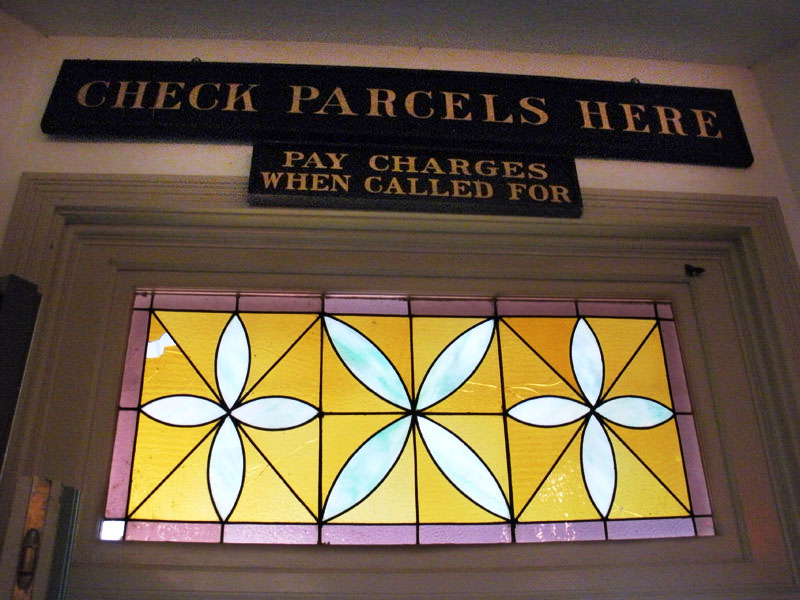
Three narrow-gauge railroad cars, donated to Pioneer Village in 1953, were on display behind the station, on the far side of the loading area.
THE RAILWAY
The Pioneer Village Railroad was a 24-inch gauge railroad. No exact track length can be found for the P.V.R.R., but by measuring its path on a map it can be estimated to be roughly 2,400 feet long – about 800 feet longer than Wild Kingdom’s track. From the station, the train crossed Farmington Creek on a truss bridge and continued north between the creek and Stagecoach road. After passing the Pioneer Pavilion, it crossed the walkway and wrapped around the Log Flume where it crossed the creek again. It then followed alongside the smaller Lagoon Miniature Railroad around the north portion of the village. The tracks crossed both entrances to Pioneer Village and then traveled behind the buildings on Main Street. After crossing the Stagecoach road, it passed in front of Governor Dern’s livery stable just before pulling back into the station.
THE END OF THE ROAD
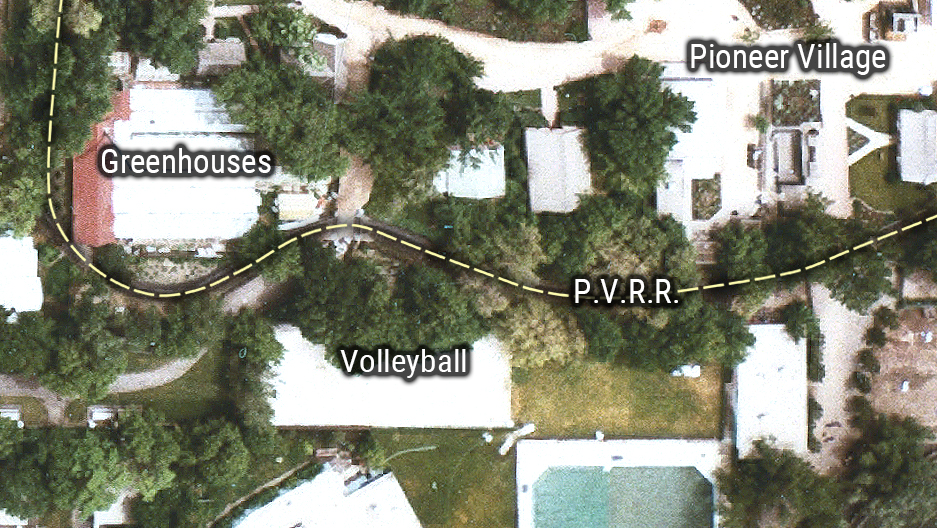
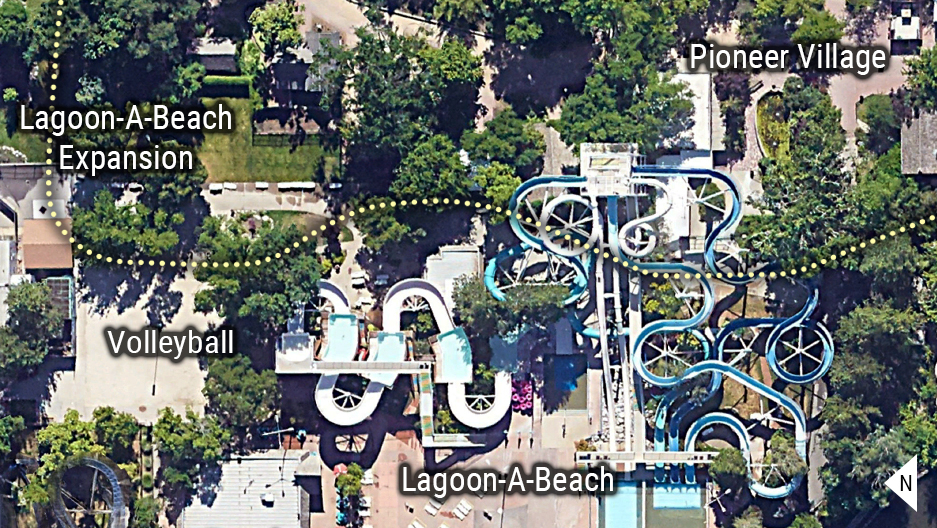
Use the slider on the image above to compare the former P.V.R.R. route with the proposed path.
When plans were being made for a new water park to replace the old Swimming Pool, water slides were placed to allow the railroad to pass through their supports. The ride closed at the end of the 1988 season for construction of Lagoon-A-Beach.
The following spring, as Lagoon was beginning another season, Ivan M. Lincoln interviewed Lagoon’s entertainment director, Ron Van Woerden, who spoke of plans to connect the tracks of the Wild Kingdom Train and P.V.R.R. The article states, “…instead of one train encircling Pioneer Village and another encircling the lagoon, the two sets of tracks will be joined for one long railroad excursion around both.” This was about the same time that Lagoon was trying to get plans approved by the Farmington City Council to develop the area that would become the home of Rattlesnake Rapids and initially included the P.V.R.R. and a mine train coaster. Plans for this development had to be redrawn and submitted many times until an agreement could be reached. Plans for Lagoon-A-Beach also changed to include more space between the water park and Pioneer Village which the train used to pass through. This may have contributed to the delay on connecting the two railroads.¹
Another article in July 1995 hints at the loss Pioneer Village had suffered since Lagoon-A-Beach opened in 1989: “…Howard Freed, who has been curator of Pioneer Village…says the number of visitors here has been sagging ever since the Old Ironsides railway closed…”. The article then discussed the upcoming installation of Rattlesnake Rapids and said that after it was completed “park personnel hope some day to add a new railroad line that would encircle the park and attract even more Pioneer Village guests.”
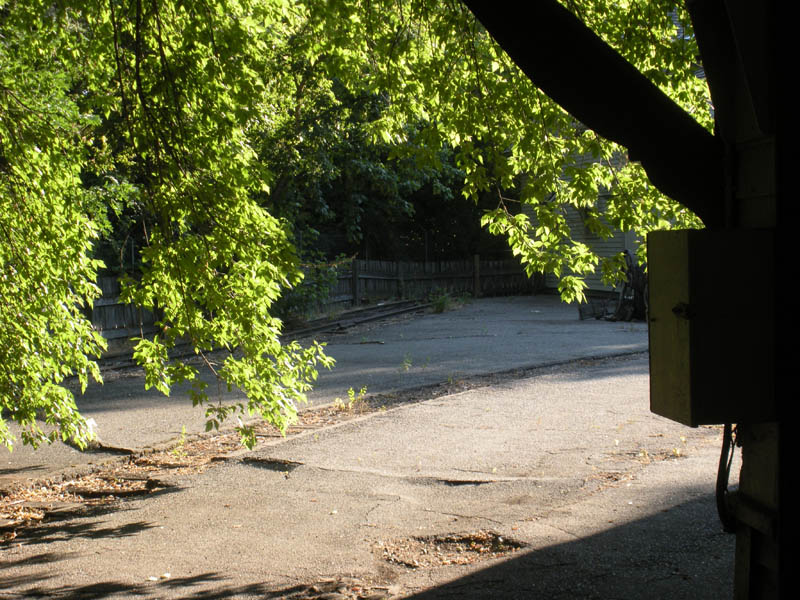
Ultimately, the P.V.R.R. never reopened, probably due to a combination of factors such as maintenance costs, the safety concern of having multiple crossings or focusing on other attractions and projects elsewhere in the park.
In the 1990s, the station had model trains on display. After an update, it re-opened in 2002 as David E. Sperry’s Model Train Museum. Behind the museum, the tracks remain along with the water tower and rails on which the D&RGW cars once sat. A long stretch of track remained alongside Pioneer Pavilion and in front of the deer pens until early 2016. The tracks used as landscaping to the south and east of the Log Flume were placed there after Rattlesnake Rapids opened in 1997, but they’re in pretty much the same spot as P.V.R.R. track once was. Between the Gold Springs and Coal City picnic terraces, just north of the Log Flume, there is what appears to be an old concrete abutment for one of the railroad bridges. Both truss bridges were relocated in the ’90s for use on the Lagoon Trail. On the path leading to the Telephone Museum or Governor Dern Livery Stable, you can see where a portion of the tracks were paved over. Merriwether returned to the Wild Kingdom track in 1989.

GALLERY
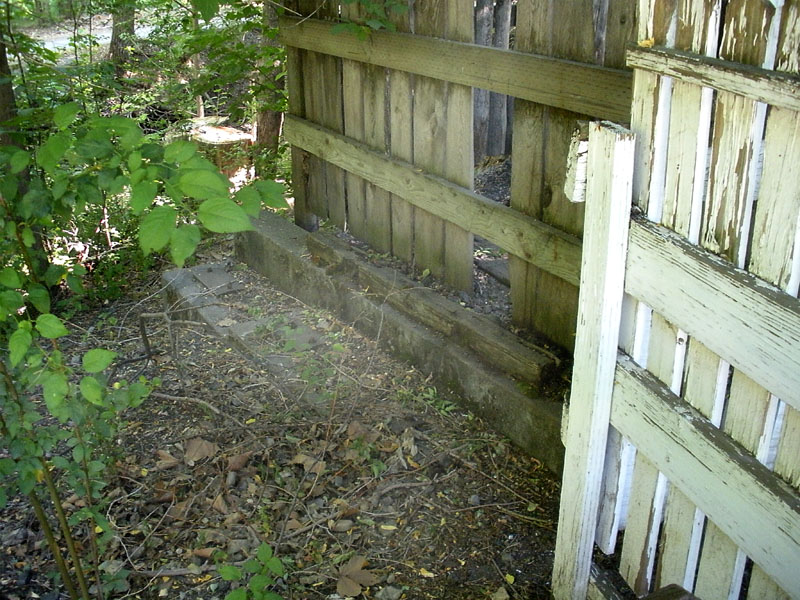
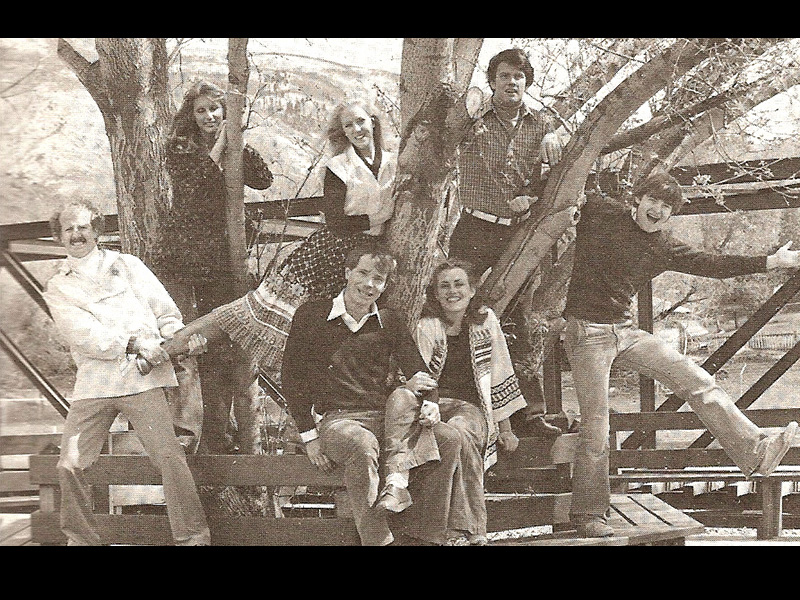
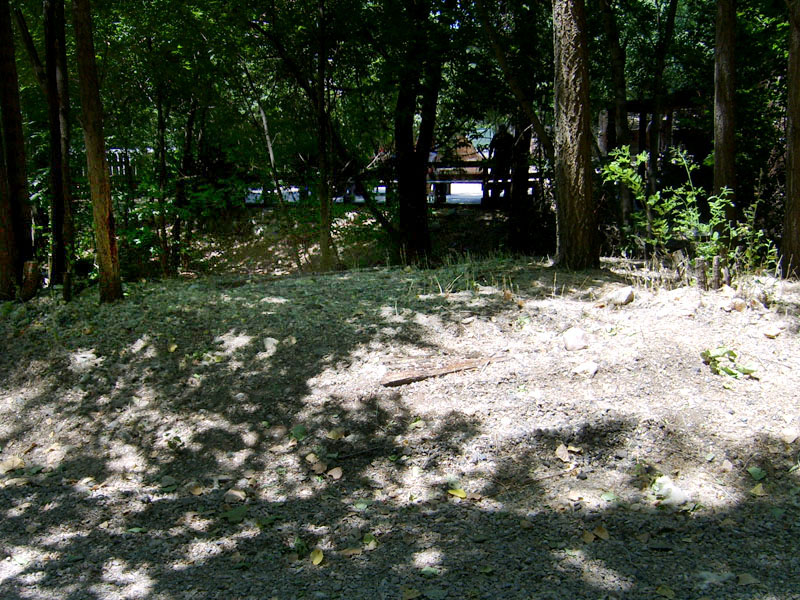
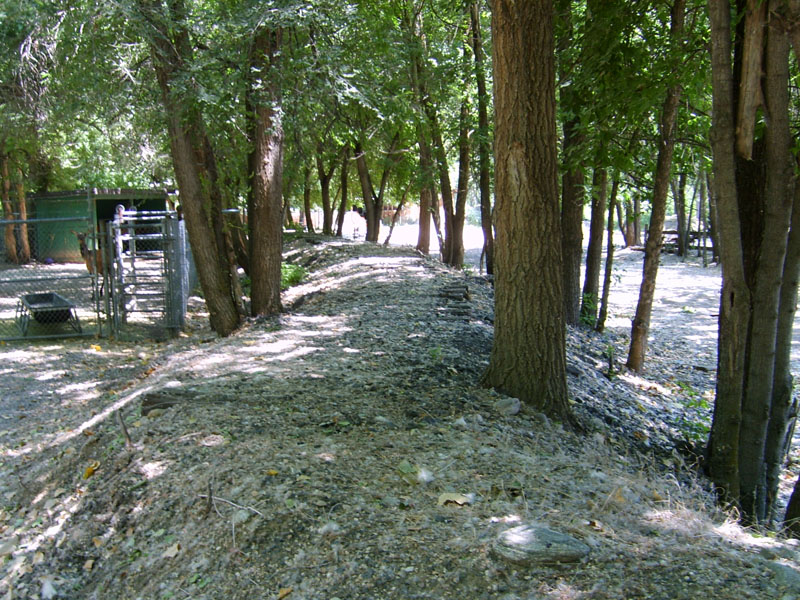
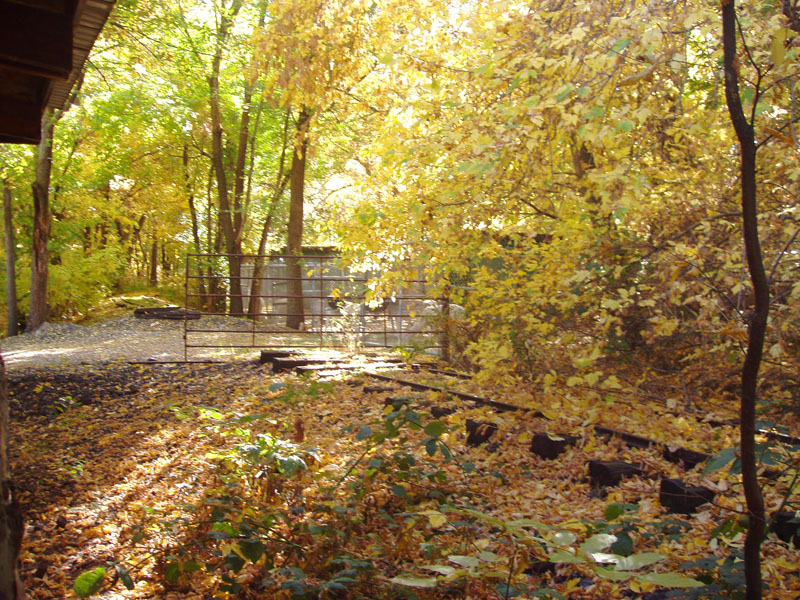
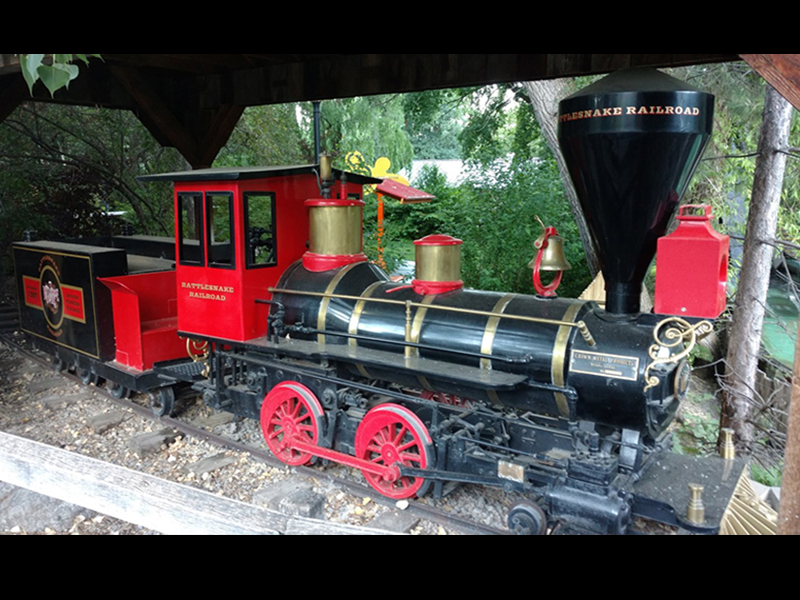
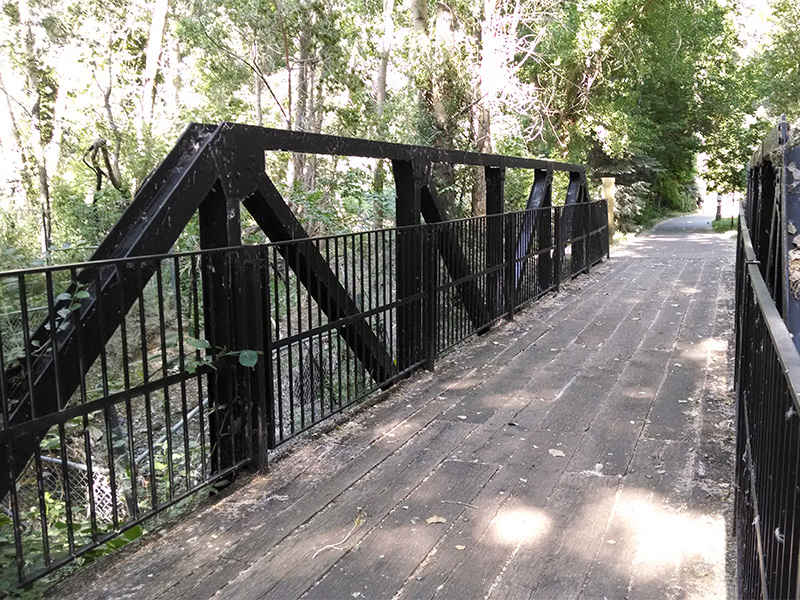
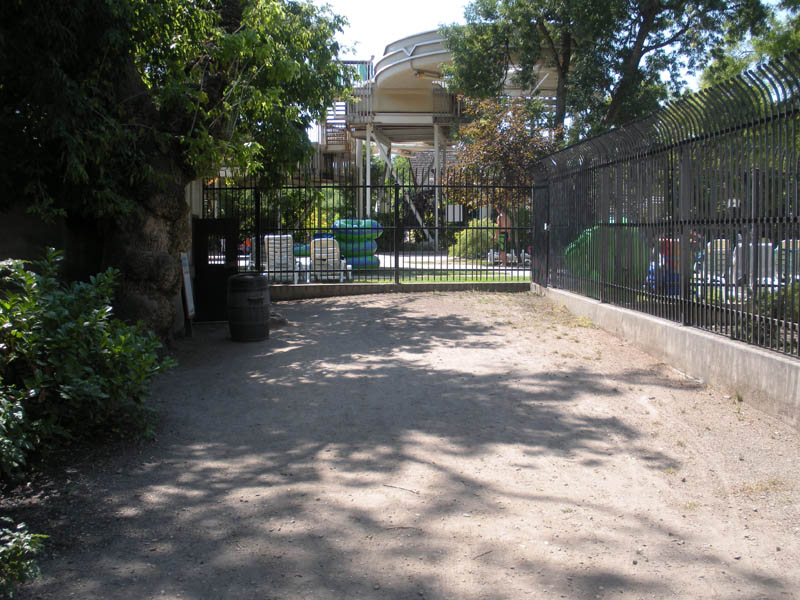

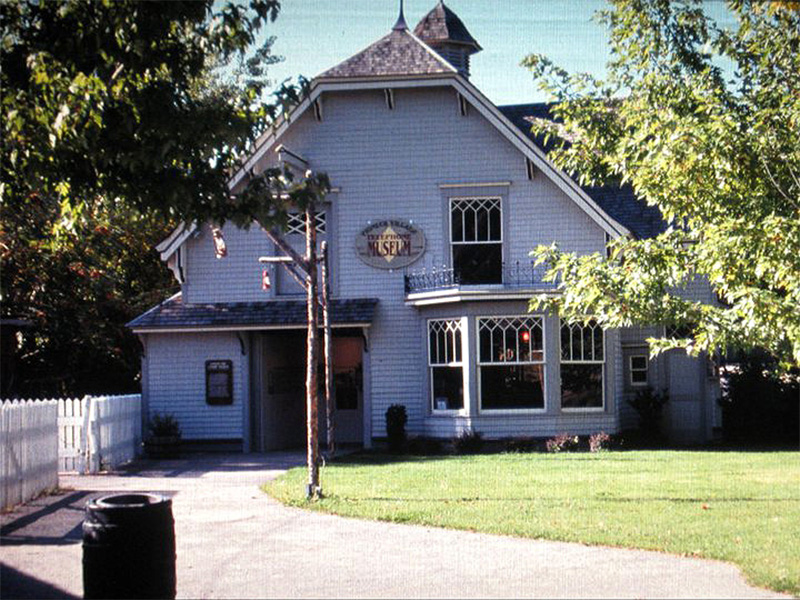

NOTES
- Read more about the creation of Lagoon-A-Beach here.

MORE FROM LHP
OTHER LINKS
Details about Merriweather at LagoonFans.com

ReferenCES
Lincoln, Ivan M. Lagoon A Beach: Resort is making waves this season. Deseret News, 21 Apr 1989.
Arave, Lynn. Pioneer Village: Lagoon offers colorful ride into the past with a rare collection of artifacts. Deseret News, 23 Jul 1995.
Arave, Lynn. Get out of town by sundown? Hey: there’s too much to see!. Deseret News, 23 Jul 1995.
Pioneer Village at Lagoon. Lagoon Press Kit, 1988.
24 inch Gauge Steam Railroad Equipment. Crown Metal Products Catalog, undated.
WKT Locomotive Merriweather. LagoonIsFun.com, accessed 13 Mar 2013.
Pixieland. PdxHistory.com, accessed 9 Feb 2013.
Oregon Short Line Railroad (1897-1936). UtahRails.net, accessed 29 May 2013.
Old Ironsides. The Franklin Institute: The Case Files, accessed 2 Jul 2013.
Pioneer Village Train. LagoonIsFun.com Forum, accessed 9 Jul 2013.
La Follette, Cameron. Pixieland. OregonEncylopedia.org, 12 May 2022.
The Forgotten Story Of Pixieland, YouTube.com, 12 Aug 2022.

